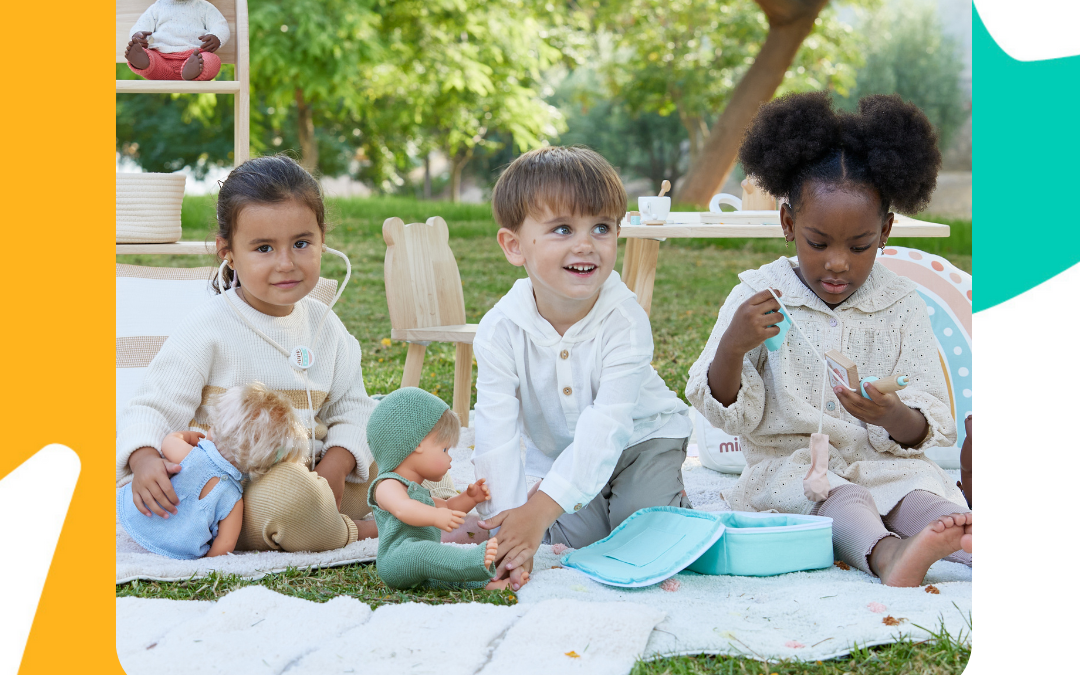Inclusive Play is one of the most magical opportunities you can give your children from the moment they’re born.
It makes for fun experiences, making new friends, strengthening their social skills and further developing their motor skills (not to mention making them pretty awesome humans).
For children, play is naturally motivating for them, spontaneous and super fun. It’s truly one of the best ways for them to learn, and why we are motivated by play-based learning experiences here at Miniland.
Inclusive Play: what is it?
Inclusive Play means play that creates opportunities for all children, regardless of their abilities, disabilities and background. It doesn’t mean that all the toys or items you have available will be accessible or comfortable for every single child, but it does mean that you’re providing enough of a variety of toys, games and tools for each child to find something that works for them.
According to Your Therapy Source, there are several foundational aspects to help support inclusive play that are also evidence based to support children on the spectrum and those with different abilities.
We’ve selected our 3 favorite tips to help you easily make your children’s play inclusive:
1. Create an Inclusive Play Environment:
It’s important that the toys and games you have available are limited and strong on their own. Pretend play, creative play or cooperative play are great ways to encourage socialization and inclusion. Make sure toys are the main thing in the space and other distracting items like tablets, tv’s, or pets are out of reach.
These toys should be ones that can be played together (social toys) and toys that can also be played alone (isolate toys).
Some examples of social toys include dolls, role playing games, balls, and blocks.

Examples of isolate toys include sensory rattles, puzzles, and other sensory toys like our newest line-up from our Feel To Learn Collection.
These beautifully made toys encourage exploration from birth, utilizing all of a baby’s or toddler’s senses to stimulate and learn.

2. Combine children of all abilities:
Make sure differently abled children are included in play with kids who demonstrate skills on level with their age and growth. You can make sure to buddy kids up based on a child’s level empathy, tolerance or his or her preferences in toys. If there is conflict, help them communicate their feelings if they’re speaking or talk to them gently if they’re still babies and toddlers. Then switch some kids around so that they each get opportunity to play and interact with every child in the group.

3. Join in on the Play:
Encourage inclusivity by joining in yourself! Sit down in the group and read a book about kindness or inclusion to drive home the message. Give them examples of how they Belong by reading our You Belong phrases and mottos. Even if you’re sitting amongst two babies or toddlers, them hearing your voice with positive words and messages will be invaluable to their development as they continue to grow and meet their important milestones

For toddlers and slightly older children, It’s crucial that you act as a facilitator whether you’re a teacher in the classroom or a parent at home by setting up the interactive activities and helping with their communication and behavior throughout their play time. It’s important to note, however, that a bit of balance is important so you allow the children to play independently amongst themselves (and that counts for babies and toddlers too! Let them try and figure out how to remove the rattle or roll the ball on their own!)
For more inclusive play tips, keep your eye on our Miniland Instagram page and follow our You Belong efforts!



